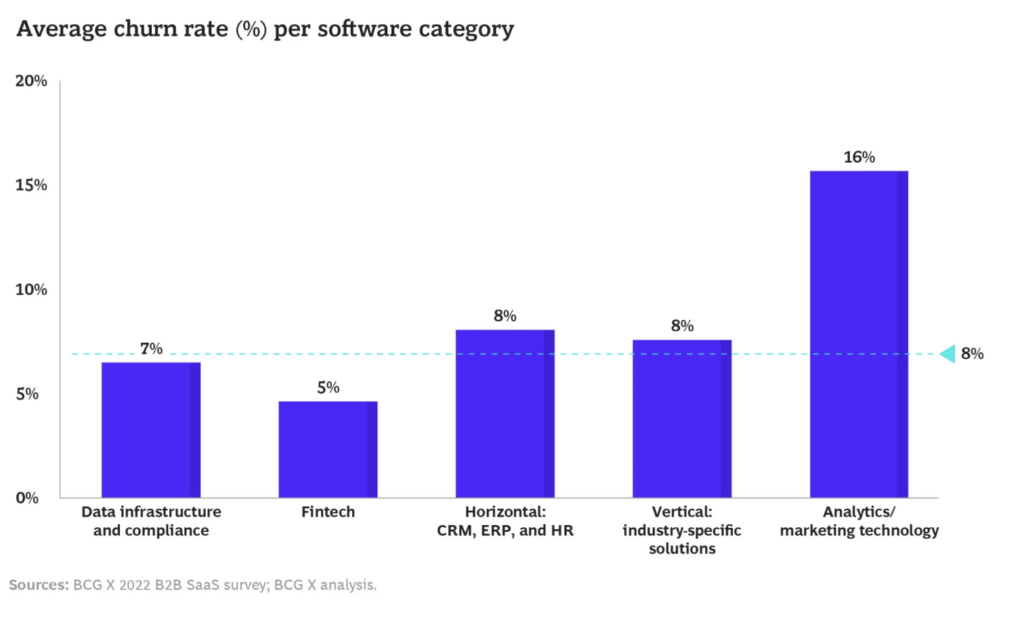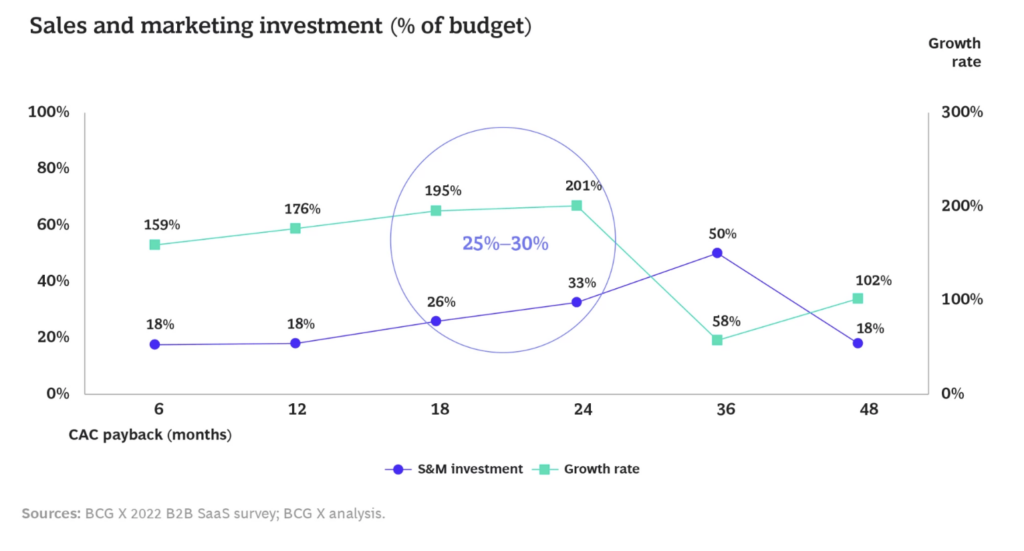B2B Lead Generation

Why Marketers Need an Always-On Lead Generation Strategy?
‘Businesses ‘who adopt an “always-on” demand generation approach and become proficient in the science of sales will be better positioned to outperform their competitors, increase profitability, and drive greater shareholder value,’ announced Forbes magazine in 2019.
According to Gartner’s annual CMO Spend and Strategy Survey. The report reveals that CMO’s marketing budgets have not returned to pre-Covid levels. Over 70% of the respondents stated that their enterprises did not have sufficient budget or resources to deliver their marketing strategy successfully in 2023.
This explains why some marketers’ lead generation and content marketing budgets don’t always stretch to always-on campaigns, even though business growth is at the top of the agenda.
With Analytics, MarTech, and AdTech companies facing a 16% churn rate, the highest within the B2B software sector, marketers only ensure that they deliver leads that replace lost business and drive additional growth.

Stop-start lead generation campaigns can have a detrimental effect on lead generation and business growth.
Buyers don’t just buy when we are ready to sell
With the challenges businesses have faced over the last five years, it’s not unusual for marketing budgets, be it for branding building or lead generation, not to match what was initially outlined in the marketing plans.
Decreasing lead generation budgets can seem counterintuitive; why turn down the pipeline when you need more new business? This often means lead generation budgets focus on a specific timeframe rather than the whole year.
You then face the problem that buyers don’t always want to buy when you want to sell to them.
Anthony Botibol, Head of Marketing at Relay42, shares his insights in the 2024 State of B2B Lead Generation Report.
He underscores the need for leveraging both owned and paid media, while also suggesting the integration of third-party collaborations, publishers, and content syndication to amplify reach.
“Marketers often forget that just 1-5% of their Ideal Customer Profile are actually in-market for their product in any given year. An always-on approach to awareness and education of your products is therefore critical for year-on-year success so a potential target customer knows you can benefit their business. While owned and paid channels get you so far, by working consistently with third parties, publishers, and content syndication you can extend that reach as part of the ‘always-on’ approach. The leaders in this report will agree that consistency is key to prove ROI.”
Although they may still see your content, if they’re not ready to buy, the impact of that activity can be diminished, with sales not always getting the leads they require.
Businesses must be prepared to play the long game, generating leads throughout the year. This is even more pertinent in an age when the buyer journey is no longer linear and can be more protracted than ever.
Sales priorities in flux
It’s a fact of life that business priorities change. The focus can shift to selling more of x than y.
But if you’ve invested your content and lead-generation marketing budget in x, this can hijack your well-thought-out plans.
Equally, relying on a relatively small number of assets for each product or solution can mean nurturing prospective customers can be a fruitless experience, especially if they’re not in buying mode and the need to revert to nurturing them with thought-leadership content till you are sure they’re in buying mode, and can be handed over to BDR’s to make the first contact.
There’s a good chance this scenario will happen to you at some stage, so how do you respond?
A watertight growth strategy with comprehensive RIO measures to prove success can ensure full buy-in and support from the C-suite. But always be sure you have a backup plan that allows you to scale your activity.
Second-guessing business challenges is never easy, but there are things you can do to be proactive.
When are your target customers due to renew?
The average period for an Enterprise License Agreement (ELA) contract is three to five years. So, knowing when the contract was signed will help you identify when a prospective client may start looking for a new supplier.
Research has shown that the discovery to contract stage is typically nine months, so leaving it too late might see you missing out on the shortlist, which buyers can often decide to reach out to a salesperson.
Nurture needs to become second nature
B2B buyers have a voracious appetite for content. In fact, according to Demand Gen Report’s Content Preferences Survey, 41% of buyers consume three to five pieces of content before engaging with a sales rep.
One way to ensure you’re considered even before you’re aware that a prospective client may be in buying mode is to provide you nurture your AMB list thought-leadership content that not only helps build their ambitions of the possible but also begins to trigger a need that may be unfulfilled by their current technology stack.
An intimate understanding of your competitor’s offering will also allow you to highlight opportunities to pique buyers’ interest as they get closer to the end of their contract.
Are you targeting your future ideal customer?
Account-based marketing (ABM) has become a crucial strategy for B2B marketers, with mature ABM programs now accounting for 79% of all sales opportunities.
Less than 6% of B2B marketers are not running some form of ABM activity.
It is essential to regularly revisit your list of target clients to ensure that you take advantage of potential business opportunities with companies that were previously off your radar.
In 2022, nearly $540B was invested in tech companies globally.
Boston Consulting has shown that the fastest-growing companies invest about 25% to 30% of revenue into their go-to-market (GTM) strategy, typically into sales and marketing.
When the investment shifts from growing the sales team to marketing that drives brand and leads, that’s the time to take action.
However, with any lead generation strategy, it’s prudent to start nurturing these fast-growing buyers before their journey begins. Nurturing buyers with content explicitly aimed at their pain points will help position your brand as a thought leader in their minds, and when the time comes to invest, you will be front of mind.

Action Plan for Marketers: Embracing the “Always-On” Lead Generation Approach
- Reassess Budget Allocation: Recognize that start-stop lead generation campaigns can hinder growth. Allocate budgets to ensure consistent lead generation throughout the year, adapting to the non-linear buyer journey.
- Stay Agile with Sales Priorities: Be prepared for shifts in business sales priorities. Diversify your content and lead-generation strategies to cater to varying product or solution demands.
- Contract Renewal Timing: Understand the typical contract durations in your industry. Begin engagement and nurturing activities well before contract renewals to be on the prospective client’s radar.
- Prioritize Nurturing: With B2B buyers consuming multiple pieces of content before engaging with sales, nurturing should be a core strategy. Deliver thought-leadership content that addresses potential unmet needs and differentiates from competitors.
- Stay Updated on Fast-Moving Start-ups: Regularly update your target client list to include fast-growing companies that might be entering buying mode due to recent investments.
- Understand Investment Patterns: Recognize that rapidly growing companies shift their investment from sales to marketing as they mature. Time your engagements to coincide with this shift to maximize impact.
- Build a Value Proposition: Develop a compelling narrative that showcases marketing’s value to the enterprise. This should highlight immediate returns (leads and sales) and long-term benefits (differentiation and growth).
- Engage Stakeholders: Foster a mutual understanding with stakeholders about how marketing delivers value. This isn’t just about data and analytics but about building a shared vision of marketing’s role in driving business success.
Marketers must implement a continuous lead-generation approach. In a world where priorities change, funds fluctuate, and buyer journeys take on non-linearity, a proactive and flexible approach becomes imperative.
Marketers can establish themselves as leaders in their sector and remain ahead of the curve by consistently nurturing prospects, comprehending rivals, and matching investments with expansion.
Adopting the “always-on” lead generation mindset is a tactic and a must for long-term success in the fast-paced B2B marketing industry.

About the Author
Nick Watt is a an experienced writer, content strategist and marketer at Demand Exchange. He previously served as EMEA editor of Adobe's CMO.com and head of partner content for Econsultancy. Nick has a wealth of experience delivering research-led content for top-tier tech brands, including Adobe, Salesforce, SAP, and Sitecore.
About the Author

Nick Watt is a an experienced writer, content strategist and marketer at Demand Exchange. He previously served as EMEA editor of Adobe's CMO.com and head of partner content for Econsultancy. Nick has a wealth of experience delivering research-led content for top-tier tech brands, including Adobe, Salesforce, SAP, and Sitecore.